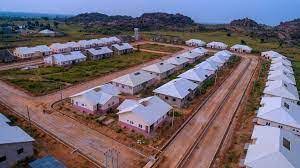Globally, the hierarchy of housing as the second most essential basic need of man next to food makes it desirable and in high demand. The right to adequate housing that is safe, healthy, available and affordable is enshrined in the global call on human settlement and shelter by the United Nations (UN) Habitat agenda.
The idea of housing need extends beyond the mere recognition of being a basic need to the perception of it being an indicator of living standard. In most part of the world, the demand for housing have increased in response to several factors including rapid urbanization and outburst in population growth.
In developed countries, sustainable properties are in great demand by tenants particularly in the US and UK, where the push to go and stay green have occupied the thoughts of commercial property owners and real estate practitioners all together.
Consumers (occupants) are increasingly choosing products and services that are resilient and environmentally friendly, this could be adjudged by the indicating of keen interest to deal with companies that have articulated their commitment towards sustainability.
Although despite the growing trend in the demand for safe and resilient housing, no country across the world have qualified fully in meeting the entire need of its citizens in terms of adequate housing delivery. World over, the challenge of delivering green housing has remained daunting. In most developing cities, decent and safe housing have remained a dream for the majority of the population.
The concept of Sustainability in housing which finds its origin in Goal 11 of the United Nations Sustainable development Goals (2015), is however, yet to gain due prominence in developing countries. Several housing policies have been put in place without yielding satisfactory outcome. Not only that the rate of population growth outweighs the rate of housing provision, but the actual housing delivery processes are more often than not overambitious to the point of not being sustainable.
In Nigeria, the pro-poor housing programmes often provide housing that are of inferior standards, in remote locations, with little consideration to the lifestyle and livelihood strategies of residents. In urban areas, the creation of amplified carbon footprint and further negative impacts on the environment have been associated with housing development.
The contribution of housing to carbon dioxide emissions is high and growing with a large chunk of residents not having affordable or “clean” energy sufficient to support their subsistence due limited access to efficient technology.
Sustainable housing is predominantly considered from “green” perspective, that is to say, resource saving and reduced greenhouse gas emission, taking into cognisance the multiple functions of housing as both physical and social system seeking to enhance and harmonise the environmental, social, cultural, and economic dimensions of built environment.
The link of housing provision to sustainable development is footed on its multidimensional impact on the improvement of life quality, health, education, safety and security of individuals, households, communities. The challenges bothering on global warming and the need for energy cost-saving and environmentally friendly buildings requires that sustainable housing be developed as a means to reducing building emissions which threatens human comfort and global existence.
It is only through sustainable solutions that the existing tensions between urban growth, climate change, poverty alleviation, affordable housing provision, and access to quality residential services, clean energy and environmental conditions can be resolved, while envisaging to unlock the potential of housing for improved economic prosperity and social development.
Promoting the development of green housing in Nigeria could address the poor condition of housing which is gradually becoming worse and drifting away from the achievement of sustainable development plans and goals. Hence, there is need to cushion housing challenges in Nigeria through sustainable development.
It is worthwhile to appraise the preparedness of stakeholders in the Nigerian building industry for sustainable (green) development, as multinational corporations are willing to assess the readiness of the nation’s property market for sustainability before considering possible investment.
Esv Bello Ibrahim Lapai,
Minna, Niger state




